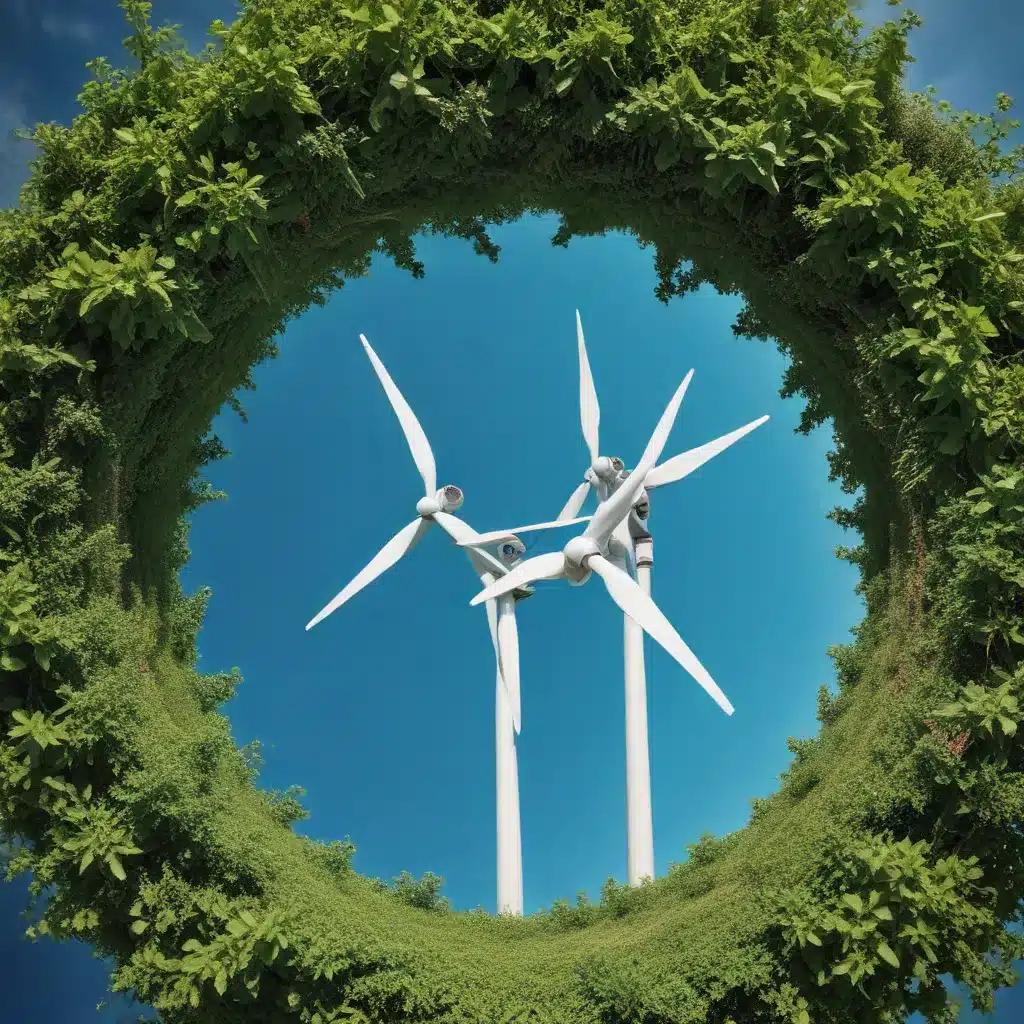
Renewable Energy and the Circular Economy: Closing the Loop
Europe’s transition to clean energy is accelerating, fueled by a growing embrace of circular economy principles that align renewable power with resource efficiency and waste reduction. Wind and solar installations are surging, hydrogen pilot projects are emerging, and innovative policy mechanisms are incentivizing the shift. But the real innovation lies in how these renewable energy advancements are being interwoven with a circular economic model—one that keeps materials and products in continuous use, regenerates natural systems, and eliminates waste.
At the heart of this convergence is the recognition that renewable energy and the circular economy are mutually reinforcing. Renewable power not only provides the clean energy needed to power a circular system, but the circular economy also ensures that the materials and resources required for renewable technologies can be perpetually cycled. This symbiotic relationship unlocks new pathways for Europe to achieve its ambitious net-zero emissions goals while cultivating a more resilient, sustainable, and innovative economy.
The Foundations of the Circular Economy
The circular economy is a systemic approach that fundamentally departs from the traditional linear “take-make-waste” model. Instead, it is based on three core principles: eliminate waste and pollution, circulate products and materials, and regenerate nature.
This shift in mindset has profound implications. Rather than viewing waste as an inevitable byproduct, the circular economy sees it as a valuable resource to be recovered and reintroduced into the production cycle. Recycling, reuse, and remanufacturing become central strategies, keeping materials in continuous circulation and minimizing the need for virgin resource extraction.
Critically, the circular economy also recognizes the importance of regenerating natural systems. By designing products and processes that work in harmony with the environment, the circular model aims to restore and enhance the resources it draws upon, from healthy soils to thriving ecosystems.
Renewable Energy in the Circular Economy
Renewable energy technologies are a perfect fit for the circular economy. Wind turbines, solar panels, and electrolyzers for green hydrogen production can all be designed for longevity, disassembly, and material recovery at end-of-life. Furthermore, the clean power generated by these renewable sources can be used to drive closed-loop material flows, powering the recycling, remanufacturing, and reuse processes that are central to the circular model.
Europe is at the forefront of this integration, with countries like Germany, Denmark, and Spain leading the way in wind power expansion. Complementing this, the continent is also rapidly scaling up its solar photovoltaic capacity, with innovations in thin-film technologies and floating solar arrays unlocking new deployment opportunities.
Notably, the rise of green hydrogen is a key circular economy enabler, providing a renewable, versatile energy carrier that can be used to power a wide range of industrial processes and applications. Numerous pilot projects are now underway across Europe, exploring how hydrogen can be economically produced, stored, and distributed using clean energy sources.
Closing the Loop through Recycling
As the renewable energy transition accelerates, a critical challenge emerges: ensuring that the materials and components used in these technologies can be perpetually cycled. This is where the circular economy’s focus on recycling and resource recovery comes into play.
Novel recycling processes are unlocking new ways to reclaim valuable materials from end-of-life renewable energy assets. For example, solar panel recycling can recover up to 95% of a panel’s materials, including silicon, silver, and copper. Similarly, wind turbine blades that were once destined for landfill are now being repurposed as building materials or feedstock for cement production.
These circular material flows not only reduce waste but also minimize the need for virgin resource extraction, curbing the environmental impact of renewable energy deployment. Moreover, the recovery of critical materials like rare earth elements used in wind turbine generators and lithium for battery storage helps to bolster the resilience and security of Europe’s clean energy supply chains.
Emerging Trends and Innovations
The integration of renewable energy and the circular economy is giving rise to a host of innovative trends and solutions. Circular business models, for instance, are reshaping how renewable technologies are designed, financed, and deployed. Product-as-a-service offerings, where customers pay for the use of a product rather than owning it, incentivize manufacturers to build for longevity and recoverability.
Technological breakthroughs are also accelerating the transition, from advanced recycling techniques to smart monitoring systems that optimize the circularity of renewable assets. Digital platforms are emerging to facilitate the trading and traceability of secondary materials, while artificial intelligence and machine learning are being leveraged to enhance the efficiency of recycling processes.
Critically, the success of these innovations hinges on the alignment of policy and regulatory frameworks that create the right incentives and remove barriers to circularity. Across Europe, policymakers are introducing measures such as extended producer responsibility, landfill diversion targets, and recycled content mandates to drive the circular economy transition.
Conclusion
The convergence of renewable energy and the circular economy represents a transformative opportunity for Europe. By aligning these two powerful forces, the continent can not only accelerate its decarbonization efforts but also cultivate a more resilient, innovative, and sustainable economic model. From wind farm expansions to hydrogen pilot projects, the building blocks of this future are already taking shape.
As Europe continues to lead the way in renewable energy and circular economy development, the lessons and best practices emerging from this region will undoubtedly inspire and inform the global transition to a more circular, low-carbon economy. The European Future Energy Forum will continue to be at the forefront of this remarkable transformation, connecting policymakers, industry leaders, and green energy advocates to drive progress and unlock the full potential of this powerful convergence.







